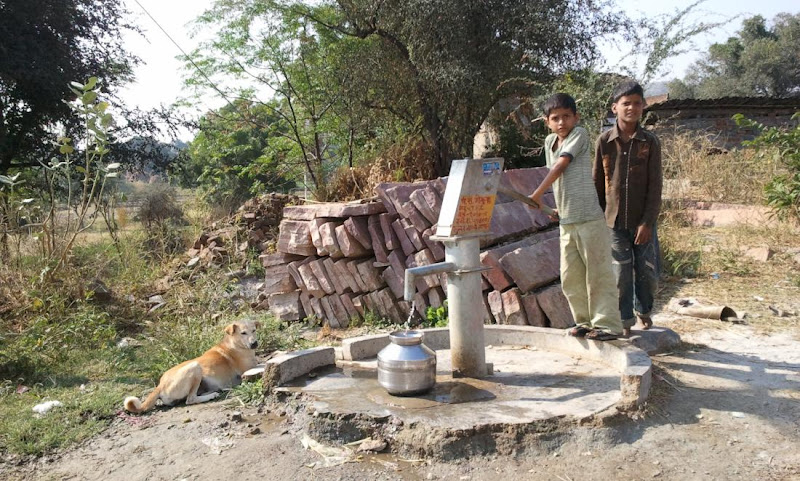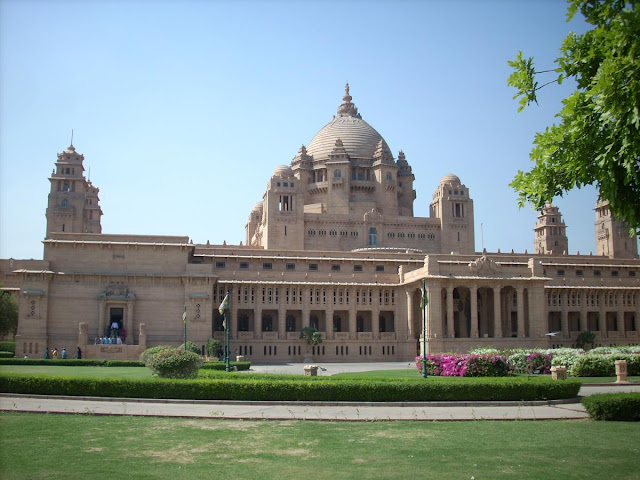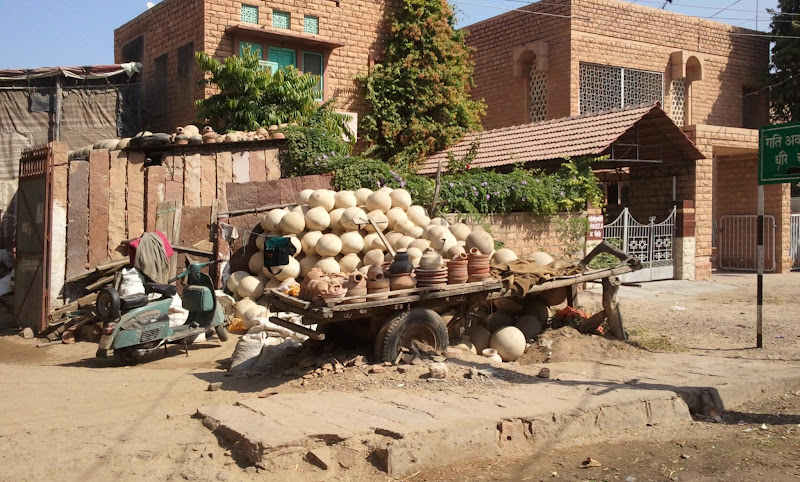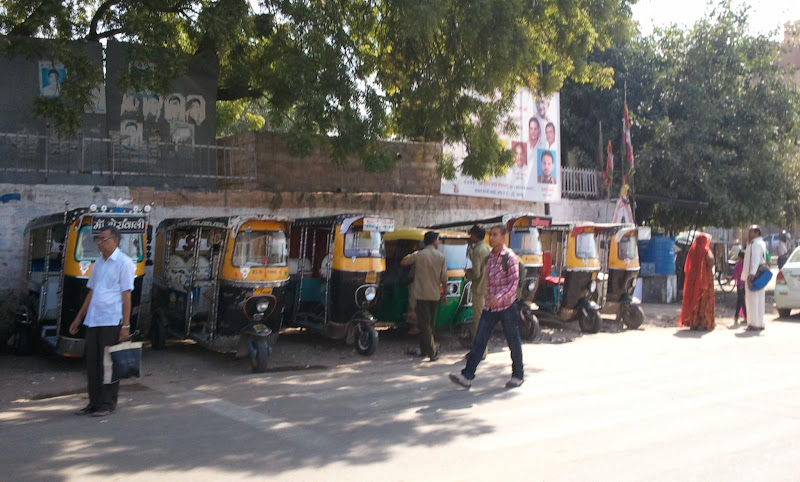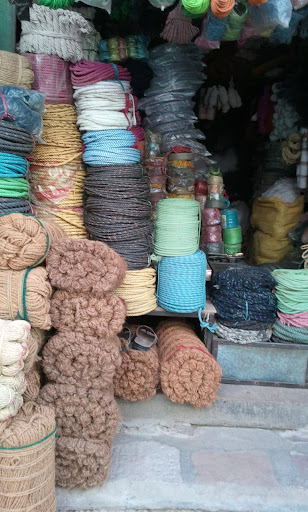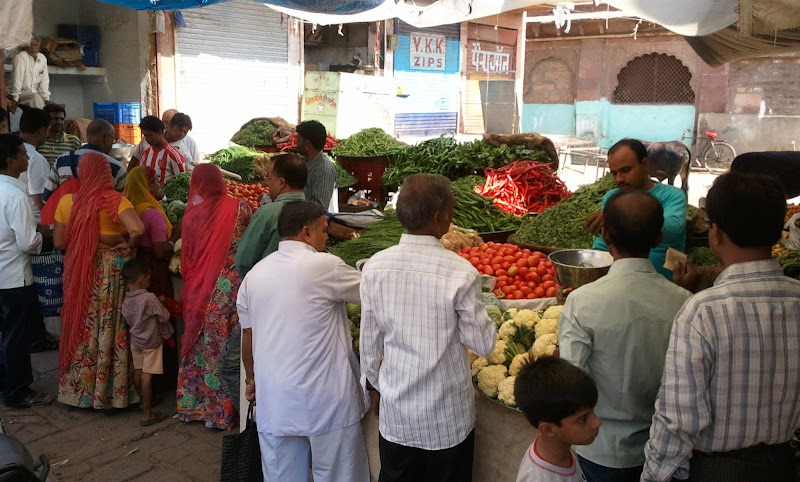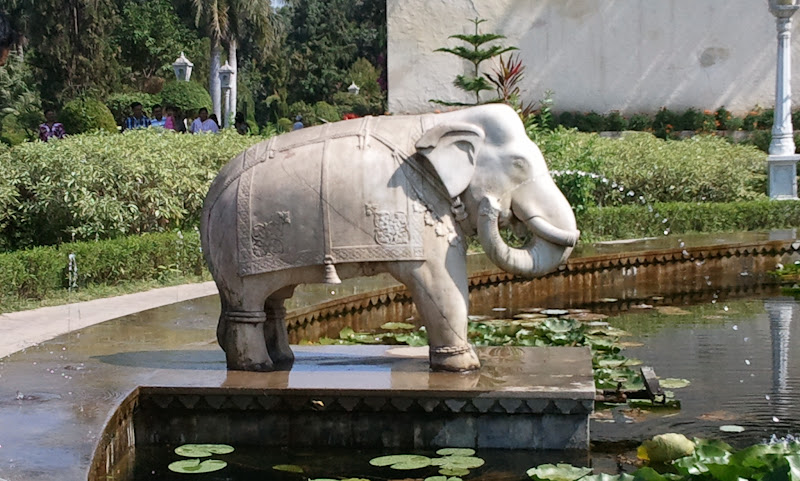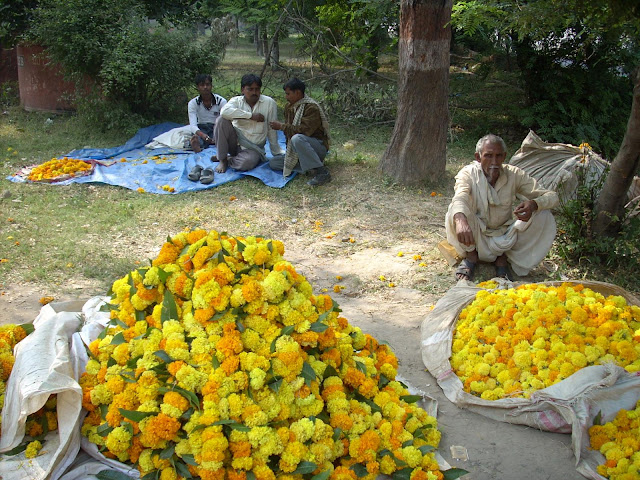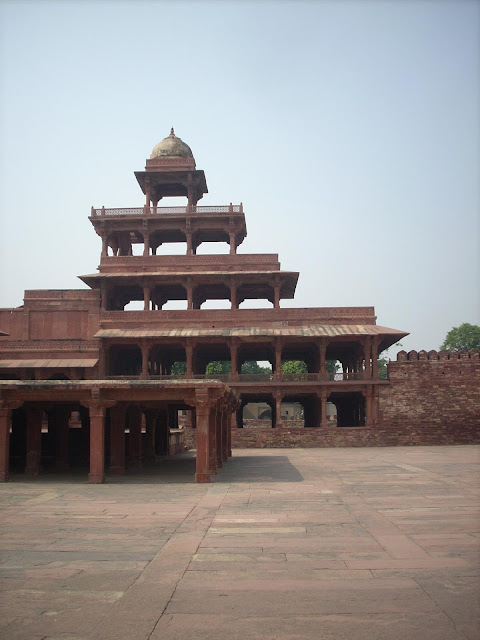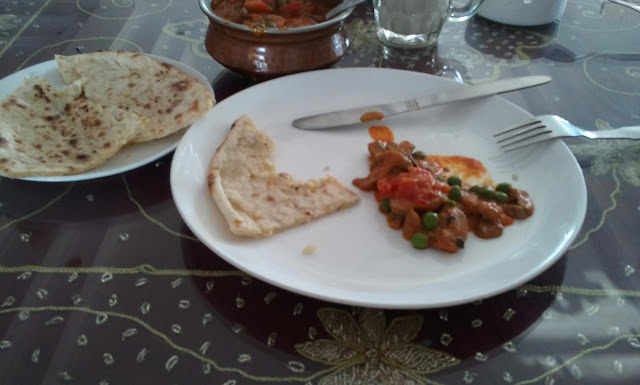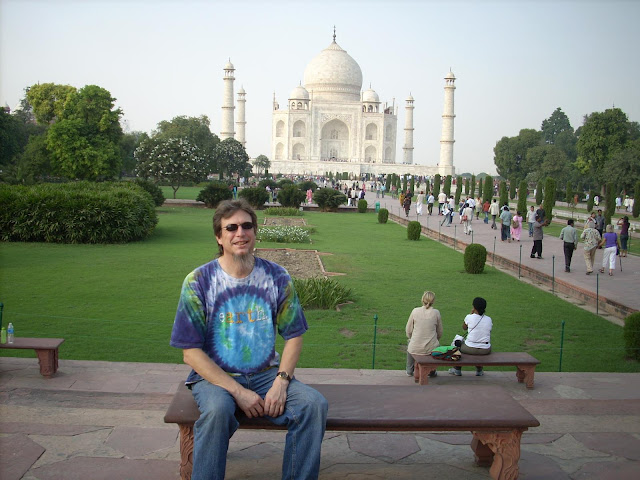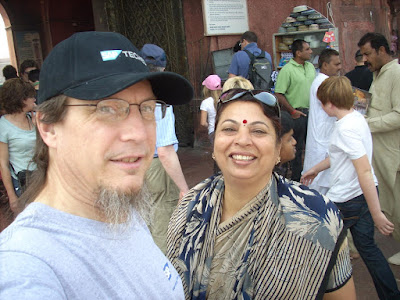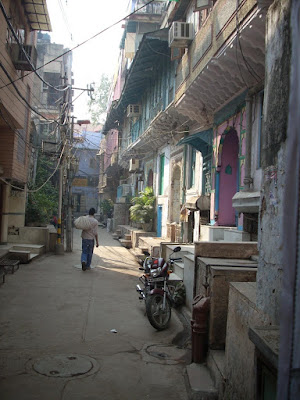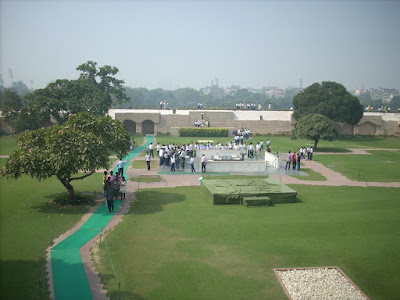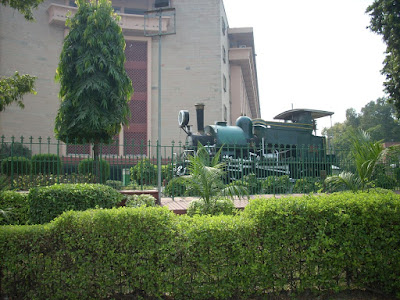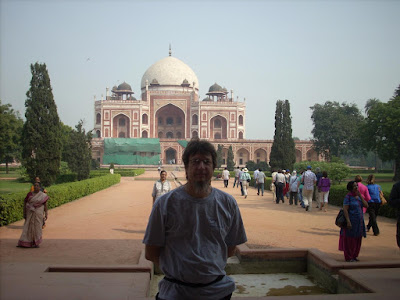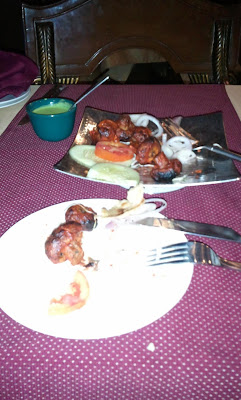26-Oct-2011
* water
The first thing, and often second, third, fourth, and fifth things a traveler is told is "don't drink the water" when visiting a foreign land. I had generally hear that phrase in the context of Mexico, though it was said to me a few times about India. Certainly one does not want to risk being ill when far away from home, but how would I reconcile my convictions against drinking bottled water with avoiding stomach illness? People compromise when faced with such decisions, and I admit I have added to the waste stream with more non-returnable bottles. In most of the hotels, I found tea kettles, which let me boil the water and sterilize it, at least as far as pathogens. No ill effect from this procedure. The taste has varied according to my location, as the water is definitely more salty (with who knows what other minerals) in Agra. In the hotel in Jaipur, no kettle, since this is a "heritage" hotel that possesses wonderful architecture, interesting door knobs, great water pressure (and heat), but I would not stress the electrical circuits much.
My driver, Praveen, said recent monsoons have been lower than historic amounts. We visited one city that had been abandoned hundreds of years ago due to drought, and though the site is a historic monument, it is surrounded by development that appears to have sufficient water. During my road travels, we passed rice paddies, which definitely require adequate irrigation; Praveen said once we pass Jaipur we will see agriculture with less water, or maybe desert.
Another aspect is the danger of disease spread by insects requiring water, such as malaria via mosquitoes. Guide books and medical advice was to minimize contact with repellent, and staying indoors. I saw more mosquitoes in the first few days, around Kolkata, then in the last fee days south of Delhi. I know it is important to narrow the risk factors, and while I am not living dangerously, I am less obsessed about seeing bugs that I was initially.
Yesterday we saw cattle being washed in a waterway by the roadside ( and I am sure I have s picture and/or a movie clip). I tired to find out if this is a daily occurrence, and I think the answer is yes, but I was uncertain whether all cattle have such immersion chances. In a lake near the Amber Fort, as well as at other waterways during this trip I've seen people bathing, not to mention the ubiquitous roadside urination everywhere from countryside to high tech office park.
Wastewater treatment plants might be easier to find from the sir than on the ground, unless one can follow the odors. So far, the closest I have been to one was an office building in Bangalore with a sign saying Karnataka Pollution Control Administration.
* electricity and petroleum
India is definitely electrified, at least in the areas I have seen. In some cases, this is limited to a fluorescent light bulb illuminating a shop. In the small village outside Dagrapur, Abesh noted a line tapped from a power main, directed straight into the back of a building. I did not verify electric service was provided to every house, but the fact that circuits were in the vicinity at least suggested it was available.
Dipankar lent me a 220 volt "dongle" to power my US devices while here. It's been absolutely necessary to keep my various cameras and comms from turning into bricks. Abesh said the spark that jumped out when plugging in circuitry was perfectly normal, though I am not sure I can get used to that flash and sound easily. With the dozens of pictures I have taken each day, the rechargeable AAs have worked out great for the camera; I don't think I have come close to needing to switch them during the day.
I think one of my guides said India had no remaining coal reserves, and used petroleum for electricity generation, as well as a small amount of hydroelectric and I guess nuclear. We have passed numerous smoke stack belching visible plumes, not to mention the emissions from the two-stroke "auto-rickshaws", like multi-passenger lawn mowers.
In Old Delhi, my tour guide pointed out the maze of overhead wiring passing overhead, commenting on the availability of power and the lack of regulation or control with such chaos. Maybe it just looks random to an outsider, as do the streets without signs, and the traffic paying no attention to lane dividers, or to the center divider for that matter.
* beggars
I mentioned street beggars on one of the SDN blogs, and received several comments, but did not get a chance to reply during one of my wireless paid-hotel windows of opportunity. The guide books (once again, holy scripture for the mundane tourist) said don't encourage them, don't pay attention to them , keep moving, nothing to see here. Easy for you to say. When a live woman holding a baby steps in front of you, you have to be pretty inhuman not to react. It's one thing to say no, or to ignore, a " hawker" holding sets of jewelry that has no attraction, it's another to deal with someone tapping on your arm, after having eaten large amounts of calories in a restaurant.
The right answer for me is to channel energy and money to charitable organizations that can can help people find ways out of poverty, or improve their health conditions, or otherwise assist them out of the cycle. Can I tell an "honest beggar" from a con artist? Maybe, maybe not. I tried not to take pictures of the snake charmers, monkey handlers, acrobats or other street people, with the idea that I can remember the situation, I don't need to memorialize it.
* design - dome
The evening last week on Design Thinking, which passively participated in, reminded me of the type of brain storming with intense direction I experienced when I heard Buckminster Fuller speak in the mid-1970s. Coming together to solve problems, using technology at hand, and examining the ratios of power use resounded among the teams. So it was a pleasant feeling to see a geodesic dome within a traffic circle in Jaipur. However, pasting the image in the blog post will need to wait until I fire up the PC somewhere on the net as I have not learned the trick of grabbing image URLs on the iPad.
This dome is child-sized, intended for a playground next to a school or in a park. I am puzzled by its placement in a traffic circle, given the difficulty of access, the environmental conditions (road dust and hydrocarbon emissions), and the tight placement. Maybe there is more to that dome than I could see at the time.

* chaos + destruction
Beyond the apogee of my trip, heading for the inevitable splashdown and hopefully a recovery. Several of my guides have attempted to explain Hindu mythology to me, with a triumvirate of birth, life and death being one concept. Knowing the impending destruction of anything can be an impediment to creative thinking and positive energy, so whatever I can get out of this trip, I hope it leads to less chaos.
Everywhere that I saw a street sweeper, a pile of trash on the side of the road, or waste being generated, I tried to compartmentalize and systematize what was occurring. Road side burning of trash that happens in India I have rarely seen in at least 40 years in the U.S., other than maybe leaf burning.
In the end, these are just small thoughts from a small person somewhere in a big world, trying my best.
